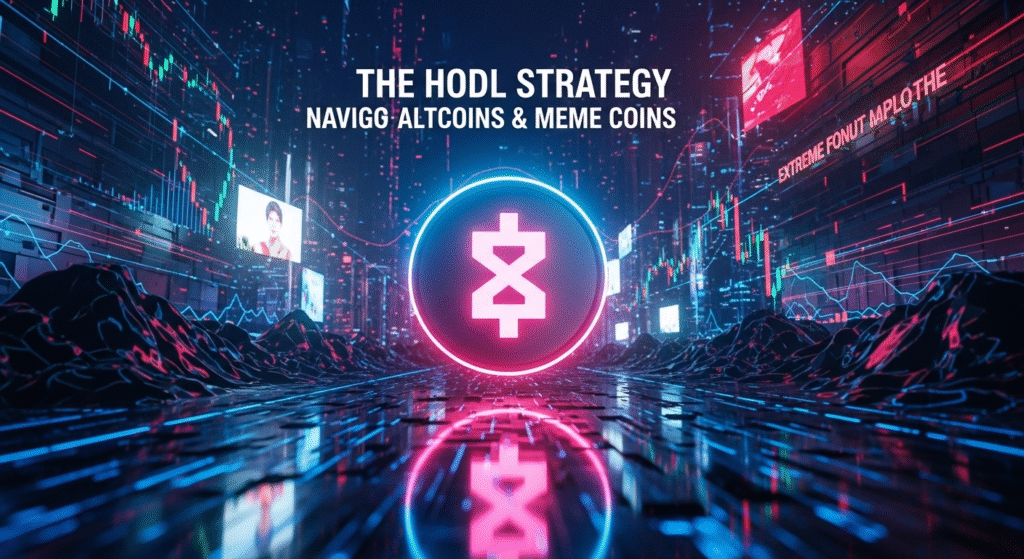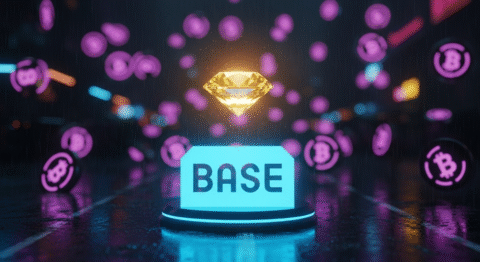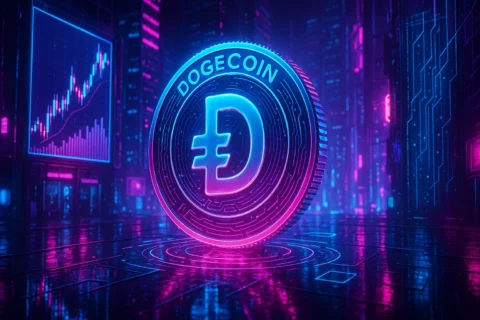Can you truly build significant wealth by simply holding onto your altcoins and meme coins, even through the wildest market swings? In the exhilarating,the journey from buying a promising altcoin to realizing substantial profits feels like navigating a labyrinth in the dark. Are the tales of overnight millionaires born from a well-timed meme coin investment just myths, or is there a discernible path? This article will dive deep into a proven methodology that has weathered many market storms and continues to be a cornerstone of successful crypto accumulation: the HODL Strategy. For those looking to master the art of Altcoin HODL, this is your definitive guide.
Crypto Market Overview
The cryptocurrency market is a dynamic ecosystem, constantly evolving with new innovations and shifting investor sentiment. Currently, we’re witnessing a fascinating period characterized by the resurgence of interest in altcoins, which are often seen as the potential next big thing after Bitcoin. Meme coins, once dismissed as mere internet jokes, have demonstrated their capacity to generate immense wealth and create viral phenomena, captivating a new generation of investors. Airdrops, a popular method for distributing tokens, continue to be a significant driver of user acquisition and community building for many new projects.
Key market indicators frequently highlight the significant price volatility inherent in these sectors. While Bitcoin and Ethereum often serve as market bellwethers, the true speculative fervor and potential for exponential growth frequently lie within the altcoin and meme coin space. Recent movements suggest a growing appetite for riskier, higher-reward assets as investors seek to diversify beyond established cryptocurrencies. Data from various crypto analytics platforms shows an increasing number of retail investors actively participating in these markets, drawn by the potential for life-changing returns. However, this influx also brings a heightened need for understanding the underlying mechanics and risks.
The Core Concept: How the HODL Strategy Actually Works
The HODL Strategy is more than just a buzzword; it’s a disciplined approach to cryptocurrency investment centered on long-term holding. The term, a misspelling of “hold,” originated from a drunken forum post in 2013 and quickly evolved into a rallying cry for investors refusing to sell their Bitcoin during a market downturn. At its core, the HODL Strategy is about conviction – believing in the fundamental value or future potential of an asset and resisting the urge to panic sell during inevitable price dips. For altcoins and meme coins, where volatility can be extreme, this long-term perspective is not just beneficial; it’s often essential for realizing significant gains.

What Are Altcoins / Meme Coins / Airdrops?
Let’s break down these crucial terms for a clear understanding.
- Altcoins: Simply put, altcoins are any cryptocurrencies that emerged after Bitcoin. They represent a vast and diverse category, ranging from established projects with unique technological advancements and utility (like Ethereum or Solana) to smaller, riskier ventures aiming to solve specific problems or create new markets. Altcoins often aim to improve upon Bitcoin’s features or offer entirely new functionalities, such as smart contracts, faster transaction speeds, or enhanced privacy.
- Meme Coins: These are cryptocurrencies that are often inspired by internet memes, social media trends, or popular culture. While many lack intrinsic utility or strong technological foundations, their value can be driven by strong community support, viral marketing, and speculative hype. Dogecoin and Shiba Inu are prime examples of meme coins that have achieved remarkable market capitalization and price appreciation, largely due to their passionate online communities.
- Airdrops: An airdrop is a marketing strategy used by cryptocurrency projects to distribute free tokens to their community members. Often, these tokens are distributed to holders of specific existing cryptocurrencies (like Ethereum) or to users who perform certain actions, such as joining a Telegram group, following a project on social media, or signing up for a newsletter. Airdrops are a way for new projects to gain traction, build a user base, and decentralize their token distribution.
Key Components & Technologies
The technological underpinnings of altcoins and meme coins are as varied as their use cases.
- Blockchain Technology: The vast majority of altcoins operate on their own blockchains, which are distributed, immutable ledgers that record transactions. These blockchains can differ from Bitcoin’s in their consensus mechanisms (e.g., Proof-of-Stake vs. Proof-of-Work), block sizes, transaction speeds, and energy efficiency.
- Smart Contracts: Many altcoins, most notably Ethereum, leverage smart contracts. These are self-executing contracts with the terms of the agreement directly written into code. They automate the execution of agreements and transactions without the need for intermediaries, forming the backbone of decentralized finance (DeFi), Non-Fungible Tokens (NFTs), and other innovative blockchain applications.
- Decentralized Finance (DeFi): This burgeoning sector utilizes blockchain technology to recreate traditional financial services (lending, borrowing, trading, insurance) in a decentralized, permissionless manner. Many altcoins are designed to be the native tokens of DeFi protocols, granting users access to these services or earning rewards for participating in the ecosystem.
- Community and Network Effects: For meme coins especially, the technology often takes a backseat to the power of community. Strong network effects, driven by social media engagement, community-driven development, and shared belief in the project’s potential, are critical components of their success. The underlying blockchain infrastructure, however, is still crucial for enabling transactions and token ownership.
The Data-Driven Perspective
Understanding the market through data is paramount for executing a successful HODL Strategy. It’s not just about buying and forgetting; it’s about understanding the ebb and flow and making informed decisions about when to acquire and when to hold steadfast.
Market Data & Trends
The altcoin market, in particular, demonstrates cyclical patterns that often present prime opportunities for long-term investors. Historically, periods following Bitcoin’s halving events have often seen a surge in altcoin prices as capital flows from Bitcoin into these potentially higher-growth assets. Data from Messari and CoinMarketCap consistently shows that while Bitcoin and Ethereum may experience more stable growth, altcoins can deliver parabolic returns during bull markets. For instance, analyzing the performance of the top 100 altcoins by market capitalization over the past five years reveals significant upward trends, interspersed with sharp corrections.
Meme coins, while more erratic, also exhibit data trends tied to social media sentiment and viral marketing campaigns. Projects that gain significant organic traction on platforms like Twitter, Reddit, and TikTok often see immediate, albeit sometimes short-lived, price spikes. However, the truly successful meme coins have managed to sustain their relevance and build communities that continue to drive value, as evidenced by the long-term resilience of Dogecoin.
Airdrops, too, have a data-driven component. Projects that conduct well-planned airdrops often see a corresponding increase in their on-chain activity and community size. Tracking the number of new wallet addresses engaging with a project post-airdrop and the subsequent trading volume can provide insights into the effectiveness of the distribution strategy.
Tokenomics & Market Health
Tokenomics refers to the economic design of a cryptocurrency, encompassing its supply, distribution, inflation/deflationary mechanisms, and utility. Analyzing tokenomics is crucial for any serious Altcoin HODL investor.
- Supply: A fixed or capped supply (like Bitcoin’s 21 million) can create scarcity, potentially driving up value if demand increases. Conversely, cryptocurrencies with unlimited or highly inflationary supplies may struggle to maintain value over time unless coupled with strong demand and burning mechanisms.
- Demand & Utility: The true value of any cryptocurrency ultimately stems from demand, which is often driven by its utility. Does the altcoin power a useful dApp? Does the meme coin have a vibrant, engaged community funding real-world initiatives, or a developing ecosystem? Projects with clear use cases and growing adoption tend to have more sustainable demand.
- Staking and Yield Generation: Many altcoins offer staking rewards, allowing holders to earn passive income by locking up their tokens. This can increase demand as users are incentivized to hold rather than sell. Data on staking participation rates can be a strong indicator of long-term confidence in a project.
- Token Burns: Some projects implement token burn mechanisms, permanently removing tokens from circulation. This deflationary pressure can increase the scarcity and potential value of the remaining tokens. Analyzing the rate and impact of token burns is critical for understanding long-term token value appreciation.
For meme coins, tokenomics can be simpler but equally impactful. Dogecoin, for example, has an inflationary supply but benefits from widespread adoption and a strong narrative. Shiba Inu introduced burning mechanisms and a decentralized exchange (ShibaSwap) to add utility. Understanding these dynamics helps differentiate between meme coins that are likely to fade and those with the potential for longevity.
Risks, Challenges & Competition
While the HODL Strategy emphasizes long-term commitment, it’s crucial to acknowledge the inherent risks involved, especially in the volatile altcoin and meme coin markets.
Risks of Altcoins and Meme Coins
- Extreme Volatility: Altcoins and meme coins are notorious for their price swings. They can experience rapid and dramatic price increases followed by equally sharp and sudden drops. This volatility means that even with a HODL Strategy, your portfolio value can fluctuate significantly.
- Project Failure and Scams: The decentralized nature of crypto means that projects can fail due to poor development, lack of funding, or outright scams (rug pulls). Many altcoins and meme coins never gain traction or are intentionally designed to defraud investors. Thorough research (due diligence) is essential to identify legitimate projects.
- Regulatory Uncertainty: The regulatory landscape for cryptocurrencies, particularly altcoins and meme coins, is still evolving globally. New regulations could impact the legality, trading, and value of these assets.
- Liquidity Issues: Smaller altcoins and meme coins may suffer from low liquidity, making it difficult to buy or sell large quantities without significantly impacting the market price. This can be a challenge when exiting a position, even with a long-term HODL Strategy.
- Technological Obsolescence: The rapid pace of innovation in the blockchain space means that a project’s technology can quickly become outdated, impacting its long-term viability.
How Does the HODL Strategy Stack Up Against Competitors?
When we talk about “competitors” to the HODL Strategy, we are primarily referring to other trading and investment approaches in the crypto market.
| Strategy | Description | Pros | Cons | Suitability for Altcoin & Meme Coin HODL |
|---|---|---|---|---|
| HODL Strategy | Buy and hold assets long-term, ignoring short-term price fluctuations. | Simple to implement, avoids trading fees, potential for massive gains from long-term growth, reduces emotional trading. | Requires extreme patience, misses out on short-term trading profits, may hold onto underperforming assets too long, significant capital locked up. | Highly suitable. This is the core of the approach. The key is to HODL assets with strong fundamentals or community backing, anticipating long-term value appreciation, especially after major market dips. |
| Day Trading | Frequent buying and selling of assets within a single day to profit from small price movements. | Potential for quick profits, capital is not tied up for long periods, can profit in both bull and bear markets. | High risk, requires significant time and skill, high transaction fees, emotionally taxing, difficult to consistently profit. | Unsuitable for typical HODL approach. While some do day trade altcoins and meme coins, it’s a completely different skillset and risk profile. A strict HODL Strategy would view this as counterproductive to long-term wealth building. |
| Swing Trading | Holding assets for a few days to weeks to capture price swings. | Can generate profits more frequently than HODLing, less time-intensive than day trading, fewer transaction fees than day trading. | Still carries significant risk, requires technical analysis skills, can miss out on major long-term trends. | Potentially complementary, not the core. A trader might use swing trading to acquire more of their chosen altcoins during dips, effectively “adding to their HODL bag.” However, it deviates from the pure “buy and forget” tenet. |
| Dollar-Cost Averaging (DCA) | Investing a fixed amount of money at regular intervals, regardless of the asset’s price. | Reduces the impact of volatility, averages out purchase price, removes emotional decision-making, builds position over time. | May result in lower average buy price than lump sum during a rapid rise, gains might be slower paced. | Highly complementary. DCA is an excellent method for acquiring assets for your HODL Strategy, especially when entering new positions or adding to existing ones. It perfectly aligns with the spirit of consistent, long-term accumulation. |
| Yield Farming/Staking | Earning passive income by providing liquidity or staking tokens in DeFi protocols. | Generates passive income, can increase overall holdings, often less volatile than active trading. | Smart contract risks, impermanent loss, protocol hacks, rewards can fluctuate. | Supportive of HODL. Staking can be seen as an extension of the HODL Strategy, where holding tokens actively earns more tokens, accelerating wealth accumulation. However, it introduces different risks. |
The Future Outlook
The trajectory for altcoins and meme coins is undeniably intertwined with broader market sentiment, technological advancements, and evolving investor behavior.
What’s Next for Altcoins / Meme Coins / Airdrops?
The future for altcoins remains bright, fueled by innovation in layer-2 scaling solutions, decentralized finance (DeFi) platforms, and the ongoing development of Web3 technologies. As the cryptocurrency market matures, we can expect to see a greater distinction between altcoins with genuine utility and those that are purely speculative. Projects that offer tangible solutions, strong community governance, and robust technology are likely to attract significant long-term investment, making them prime candidates for a successful Altcoin HODL.
Meme coins, while often unpredictable, have proven their staying power. Their future will likely depend on their communities’ ability to evolve, integrate new utility, and maintain relevance beyond fleeting internet trends. The increasing adoption of cryptocurrencies by mainstream audiences, coupled with the power of social media, suggests that meme coins will continue to capture attention and potentially generate wealth for those who understand their unique cultural drivers.
Airdrops will likely remain a key tool for project engagement. As the market becomes more sophisticated, we may see more targeted airdrops aimed at rewarding specific community actions, early adopters, or users of particular DeFi protocols. For the shrewd investor, identifying potentially valuable airdrops can be a supplementary strategy to a core HODL Strategy, offering opportunities to acquire new assets with minimal initial investment.
Conclusion
The HODL Strategy is not about speculative trading or chasing quick profits. It’s a disciplined, long-term approach that requires patience, conviction, and a fundamental belief in the potential of the assets you hold. For altcoins and meme coins, where volatility is a constant companion, the ability to resist the fear of missing out (FOMO) or the panic of a market crash is paramount. By focusing on strong fundamentals, understanding project tokenomics, and leveraging data-driven insights, you can navigate the complexities of these markets and build significant wealth over time. Remember, the journey to crypto wealth is often a marathon, not a sprint, and the HODL Strategy is your reliable companion for the long haul.
What are your thoughts on the HODL Strategy for altcoins and meme coins? Share your experiences and insights in the comments below! Don’t miss out on our upcoming articles exploring specific altcoin analyses and advanced crypto investment techniques. Subscribe to stay updated on the latest trends and strategies in the ever-evolving world of digital assets.
FAQs
Q1: Is the HODL Strategy still relevant for altcoins and meme coins in today’s market?
A1: Yes, the HODL Strategy remains incredibly relevant, especially for altcoins and meme coins. While these assets are known for volatility, their potential for exponential growth often requires a long-term holding period to truly materialize. Resisting short-term market noise and holding onto fundamentally sound or community-driven projects is key.
Q2: How do I choose which altcoins or meme coins to HODL?
A2: Choosing the right assets is crucial for the HODL Strategy. For altcoins, look for projects with strong development teams, clear use cases, innovative technology, and active communities. For meme coins, community sentiment, viral potential, and any developing utility or development roadmaps are key factors to consider. Always conduct thorough research (DYOR – Do Your Own Research).
Q3: What are the biggest risks associated with the HODL Strategy for altcoins and meme coins?
A3: The biggest risks include extreme price volatility, the possibility of project failure or scams, regulatory uncertainty, and potential technological obsolescence. Even with a long-term view, it’s important to be aware that some of your chosen assets may not succeed.
Q4: How can I practice Dollar-Cost Averaging (DCA) as part of my HODL Strategy?
A4: Dollar-Cost Averaging (DCA) is an excellent complementary strategy. It involves investing a fixed amount of money into your chosen altcoin or meme coin at regular intervals (e.g., weekly or monthly), regardless of its current price. This averages out your purchase cost over time and reduces the risk of buying at a market peak.
Q5: Should I actively trade some of my crypto while HODLing others?
A5: Some investors allocate a portion of their portfolio to active trading while maintaining a core HODL Strategy for their long-term holdings. This is a more advanced approach that requires different skill sets and risk management. For beginners, focusing on a clear HODL Strategy is often more manageable and less stressful.
Q6: What’s the difference between a HODL Strategy and just being a passive investor?
A6: While both involve holding, the HODL Strategy often implies a more active conviction in the asset’s long-term potential, even through significant downturns. A passive investor might simply hold across a broad market without as much conviction per asset. The HODL Strategy encourages research, belief, and resilience.






